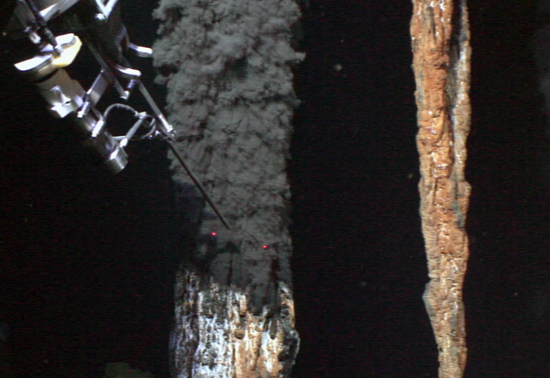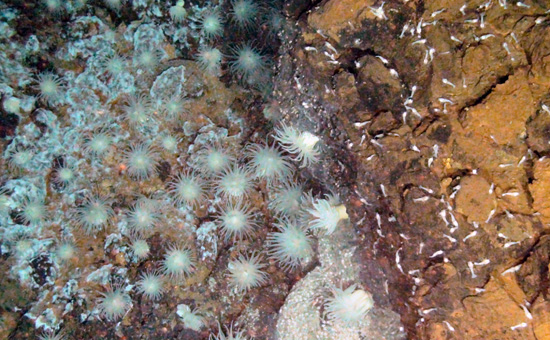Wednesday 20th February
Throughout the small hours of the morning, and on into daylight hours, our work has continued with the Isis ROV at the Beebe Vent Field. At 0950h local time, having spent almost 18 hours working on the seafloor, we started to bring the vehicle back through the 5 km of ocean below us.
The Isis ROV touched down on the deck of the RRS James Cook almost exactly 24 hours after setting out on the latest dive. In those hours we managed to map the distribution of life at several sets of vents here, measure the temperature of the fluids shooting out of those vents, and collect samples of those hot fluids to analyse. Although not quite everything in our admittedly ambitious dive plan was completed, all science teams involved in this dive are pleased with the outcome.

Preparing to take the temperature of a deep-sea vent
Having the capability to work at a depth of 5 km is, on reflection, astounding. The Beebe Vent Field is named for William Beebe, who was one of the first people to venture in the deep ocean, and see its inhabitants alive, when he dived to 923 metres deep in the first bathysphere in 1934. In fewer than 80 years since, we have developed the capability to go much deeper, stay for longer, and visit far more often. At last, and for the first time in the history of our species, the previously hidden world of the deep ocean is open to us.
What we choose to do with this new capability is up to us. There are undoubtedly opportunities in the resources of the ocean floor, not least the minerals that form at deep-sea vents. But as we have seen, there are also challenges in the environmental impact that our lives are already having on the ocean floor, which is no longer a remote and pristine wilderness. I hope that the insights we gain from our work here will help us to choose our future course in the deep ocean.

Inhabitants of the Beebe Vent Field
This evening the ROV team are preparing Isis for another dive to the Beebe Vent Field, this time to investigate its geology. In the meantime, the geochemistry team have deployed the CTD probe to collect further samples of the fluids rising and dispersing into the ocean above.
